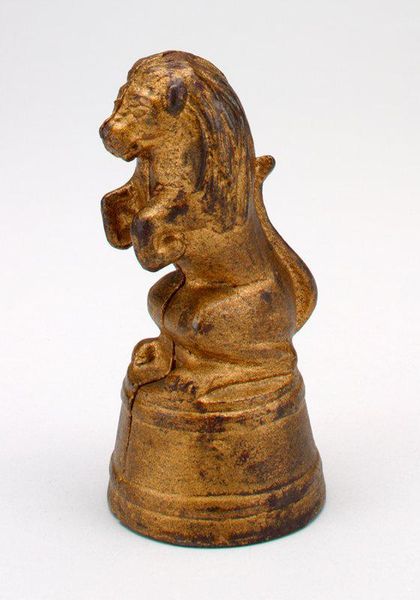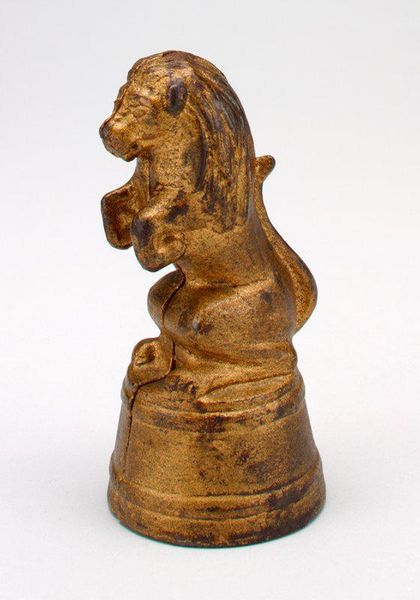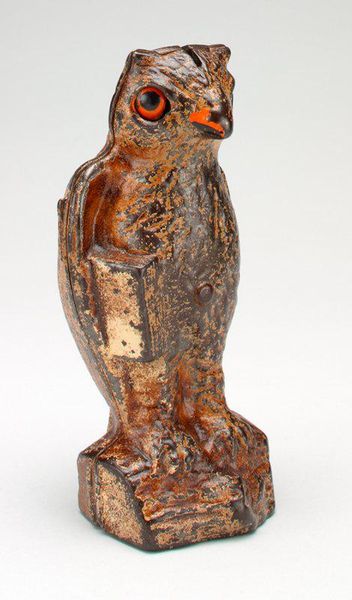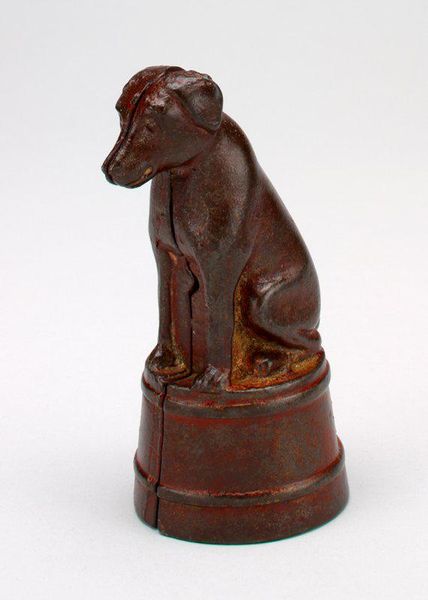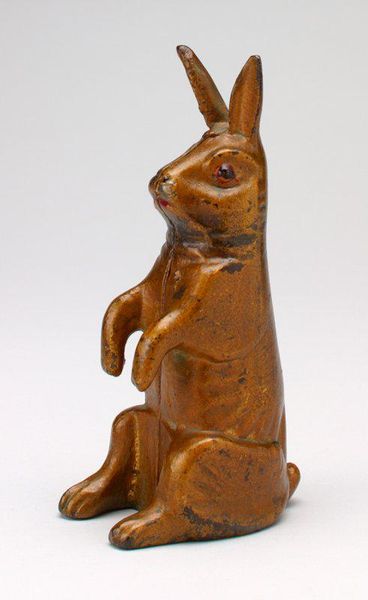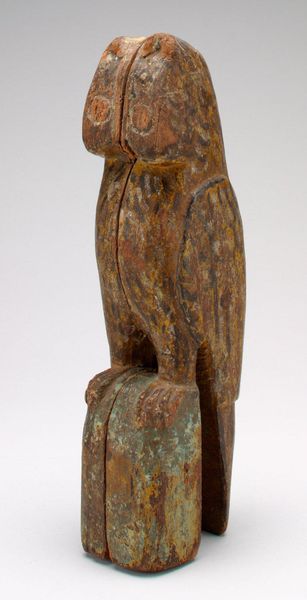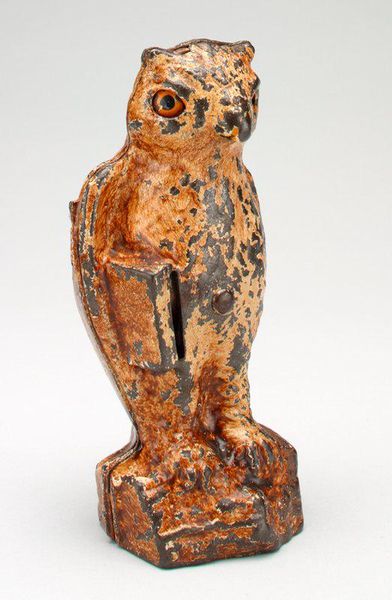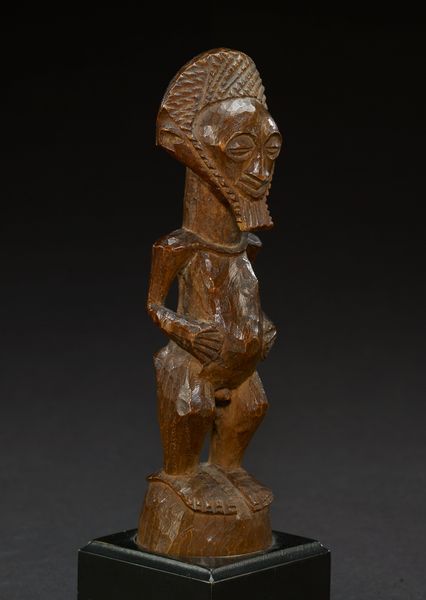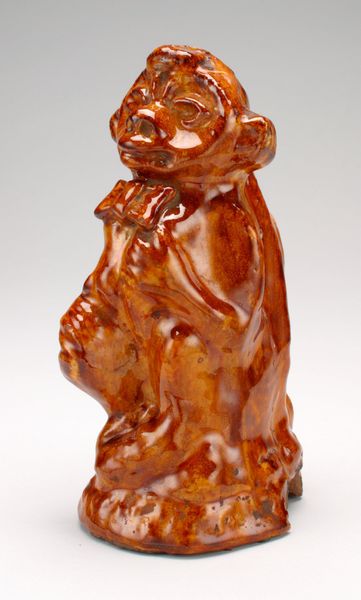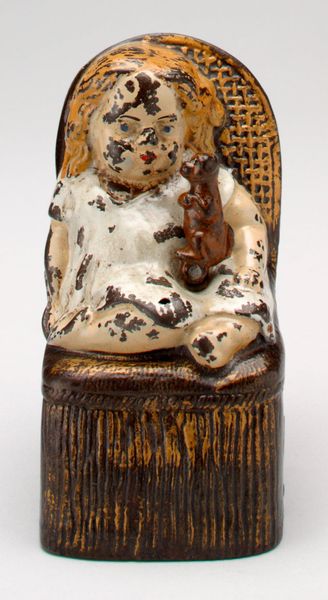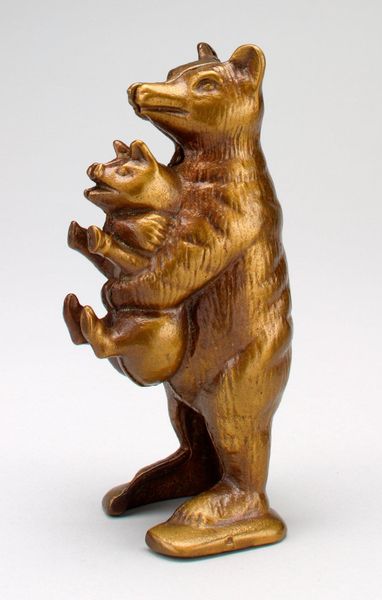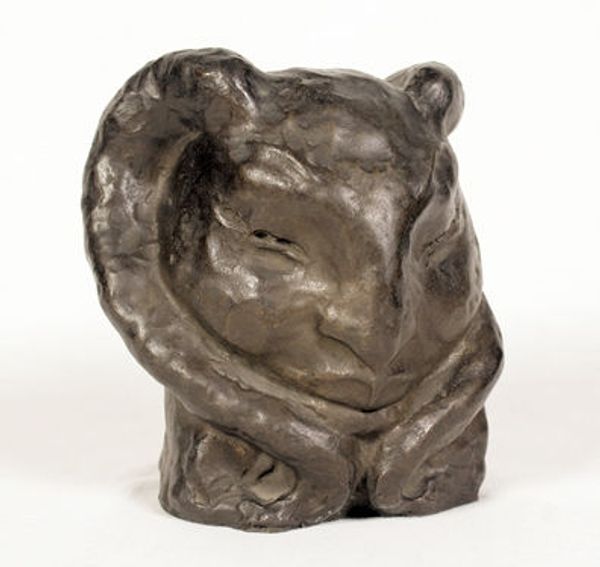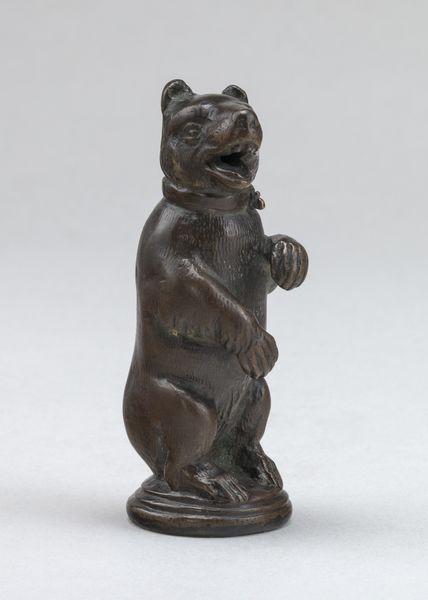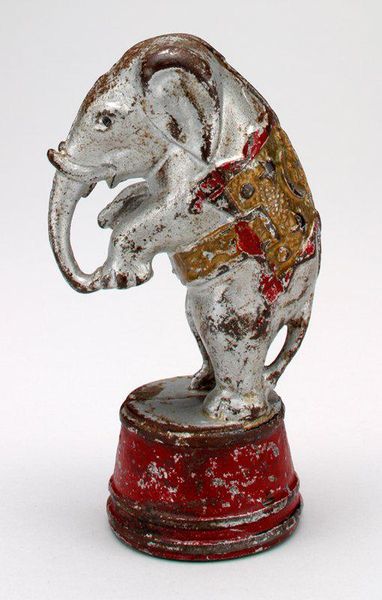
bronze, sculpture
#
art-deco
#
bronze
#
figuration
#
geometric
#
sculpture
#
realism
Dimensions: 5 1/2 x 2 x 2 5/8 in. (13.97 x 5.08 x 6.67 cm) (approximate)
Copyright: No Known Copyright
Curator: This intriguing piece, entitled -Lion on Tub, was crafted sometime between 1920 and 1934 by the A.C. Williams Company. It's a bronze sculpture, currently residing here at the Minneapolis Institute of Art. Editor: Immediately, I’m struck by the contrast. A lion, traditionally a symbol of strength and the wild, presented in such a domesticated, almost whimsical manner. The rigid verticality from its base to head amplifies this feeling. Curator: Indeed. The sculpture presents an intriguing juxtaposition. Let’s consider its formal elements. The bronze construction provides a weightiness and sense of permanence, contrasting with the playful pose of the lion, and the implied narrative element that it’s sitting in a tub, clutching a sort of tablet. Editor: From a historical perspective, we have to acknowledge the context. The A.C. Williams Company was known for its cast iron toys and novelty items. How did that influence the object? The fact that it appears to have come from a foundry for children makes me consider who the primary audience was and if children of the time engaged with their imperial identity through objects like this? The company and it's market have strong implications for meaning. Curator: An astute observation. One might also interpret the stylized features as reflective of the Art Deco aesthetic. The streamlined shapes and geometric abstraction evident in its mane and simplified facial features, echo that early 20th century movement. Editor: And did such aesthetic and style choices normalize depictions of power dynamics both within the west and abroad? Its mass production hints at a broader appeal and normalization of certain values. This makes the lack of a narrative explicit, for me, speak even louder. Curator: It's true; the visual language does much of the work. And I am convinced by your proposition that this image circulated ideologies that had very little to do with childhood innocence. Thinking through its material qualities and context have illuminated some previously unseen relationships. Editor: Precisely. I appreciate how a close look at the bronze itself alongside its origins has revealed complexities that I did not see from my first viewing.
Comments
No comments
Be the first to comment and join the conversation on the ultimate creative platform.
